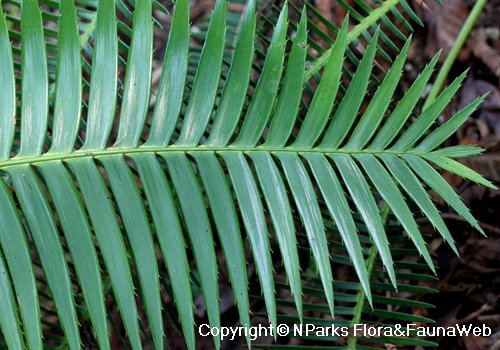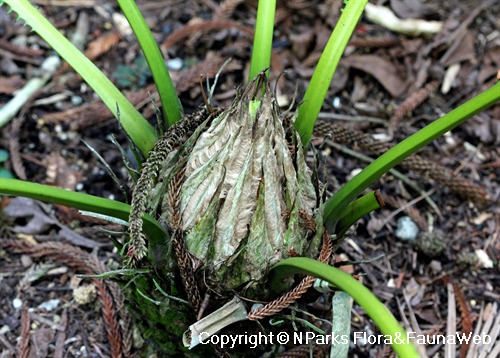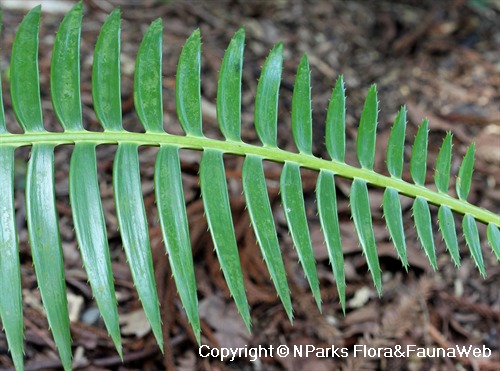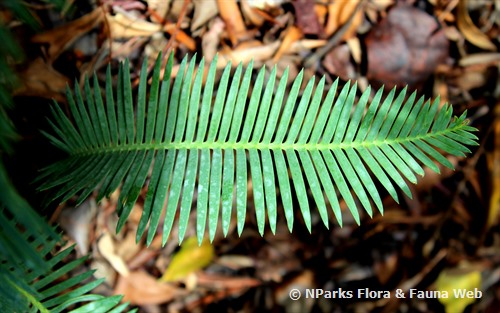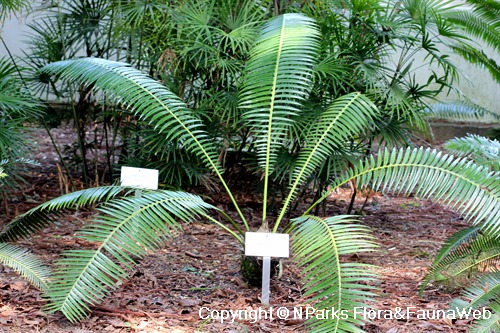
Name
Classifications and Characteristics
| Plant Division | Gymnosperms (Non-Flowering Seed Plants) (Cycad) |
|---|---|
| Plant Growth Form | Cycad |
| Lifespan (in Singapore) | Perennial |
Biogeography
| Native Distribution | Mexico(Oaxaca, Veracruz) |
|---|---|
| Native Habitat | Terrestrial (Primary Rainforest, Secondary Rainforest) |
| Preferred Climate Zone | Tropical, Sub-Tropical / Monsoonal |
| CITES Protection | True (Appendix II) |
Description and Ethnobotany
| Foliage | The leaves are stiff, extending radially out from the trunk with 150-250 spiny leaflets on each leaf. |
|---|---|
| Habitat | It grows on rocky, limestone in lowland tropical rainforest at 91-457m above sea level. |
| Cultivation | Dioon spinulosum is fast and easily grown plant for a cycad. It can grow in poor soils, and handles moisture and humidity better than most of cycads. |
Landscaping Features
| Landscape Uses | Parks & Gardens, Focal Plant, Interiorscape/ Indoor Plant |
|---|---|
| Thematic Landscaping | Rockery / Desert Garden |
| Usage Hazard - Cons | Spines/Thorns - Leaf |
Plant Care and Propagation
| Light Preference | Semi-Shade |
|---|---|
| Water Preference | Moderate Water, Little Water |
| Plant Growth Rate | Slow |
| Rootzone Tolerance | Moist Soils, Well-Drained Soils |
| Planting Remarks | The leaflets of Dioon spinulosum are spiny, it is advised to plant it away from footpaths. |
| Propagation Method | Seed |
Foliar
| Foliage Retention | Evergreen |
|---|---|
| Mature Foliage Colour(s) | Green |
| Mature Foliage Texture(s) | Glossy / Shiny, Spiny / Bristly / Stinging |
| Foliar Type | Compound |
Fruit, Seed and Spore
| Plant Sexuality (non-Angiosperm) | Dioecious |
|---|
Image Repository
Others
| Master ID | 30775 |
|---|---|
| Species ID | 5123 |
| Flora Disclaimer | The information in this website has been compiled from reliable sources, such as reference works on medicinal plants. It is not a substitute for medical advice or treatment and NParks does not purport to provide any medical advice. Readers should always consult his/her physician before using or consuming a plant for medicinal purposes. |

